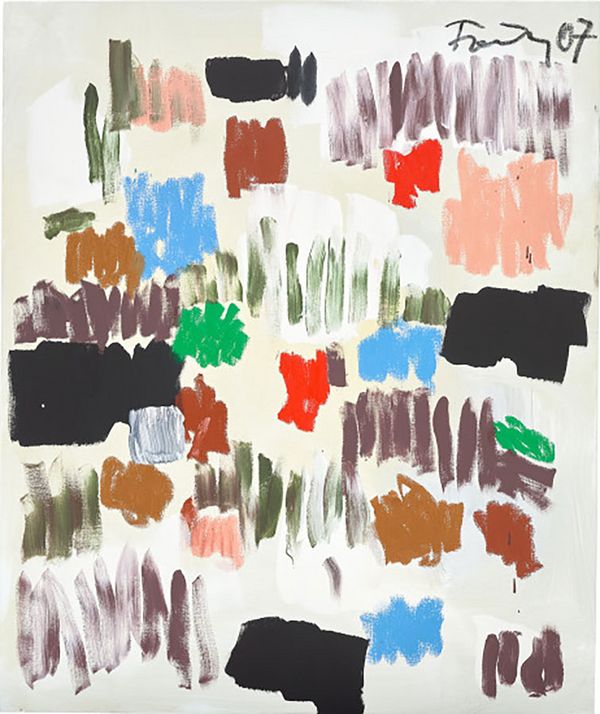Gunther Förg, Untitled (2007), New Now, London.
In our London New Now Sale, the strong showing of artists from German-speaking countries — from giants like Günther Förg and Gerhard Richter to historically significant woman artists and a new generation of upand-coming stars — reflects a resurgent interest from institutions and collectors worldwide.
Gunther Förg
Gunther Förg (1952–2013) earned international acclaim for rigorous conceptual investigations through successive bodies of work since the 1970s — from his celebrated early gray monochrome works to later architectural pieces and his photographic sculptures of the 1980s. In the Spot Paintings, his last series before he took ill in 2009, the artist finally breaks free of the grid once and for all, taking flight as never before into bright symphonies of color.
Untitled (2007) is among the simpler, more resolved and nuanced compositions in the series, with the artist’s deliberative intelligence evident in each passage and in the movement between them. Here, Förg counterpoints vibrant reds, blues, pinks, greens, and purples with more somber notes of deep brown and black against an airy field of white and cream. It is an orchestration of measured and thoughtful calligraphic applications of color that breathes with poignant musicality. Formerly in the collection of The Albertina Museum and the Essl Collection — two of Austria's most important permanent collections — its provenance is sterling.
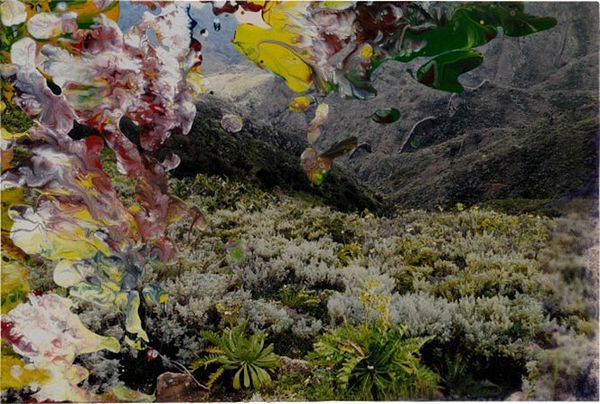
Gerhard Richter, 28.3.08 (2008), New Now, London.
Gerhard Richter
Another highlight of our sale are two small gems by powerhouse Gerhard Richter, among the most important of all post-war artists. The artist famously splits his oeuvre between photorealistic and abstract works. It’s in his “Overpainting” series that he brings photographic reality and paint into startling harmony. Our two offerings, 13.3.08 and 23.3.08, are stellar examples: both, though small in size, are epic and complex compositions, masterfully fusing richly molten abstraction into serene pastoral postcard landscapes.

Kiki Kogelnik, Melancholie (1962), New Now, London.
Kiki Kogelnik
Melancholie (1962) is an important work by Kiki Kogelnik (1935–1997), executed at a formative moment in the artist’s career. Now widely recognized as Austria’s most important Pop artist, Kogelnik arrived in New York as early as 1961 and quickly bonded with all the key artists of the Pop scene, including Roy Lichtenstein, Claes Oldenburg, and Tom Wesselmann. She is noted in that era as a vibrant, captivating presence among them. So too did their influence leave its mark in her newfound graphic exuberance, years ahead of its time.
This painting’s vibrant colors and flat, floating cut-out silhouettes are characteristic of the exuberant new direction of her work in the 1960s. It is nonetheless an ambivalent confection: counterpointing its buoyant surface glee are skulls and bombs that speak to the angsty underside of American post-war optimism. Kogelnik is now widely championed for layering a prescient and savvy feminist critique of Cold War techno-politics into her bright and bold Pop vernacular. Major solo shows with the Kunsthall Stavanger, Norway, Modern Art Oxford, UK, and the Kunstverein in Hamburg attest to her stature — not to mention two major retrospectives in Austria and a third planned for next year at the Bank Austria Kunstforum Wein.
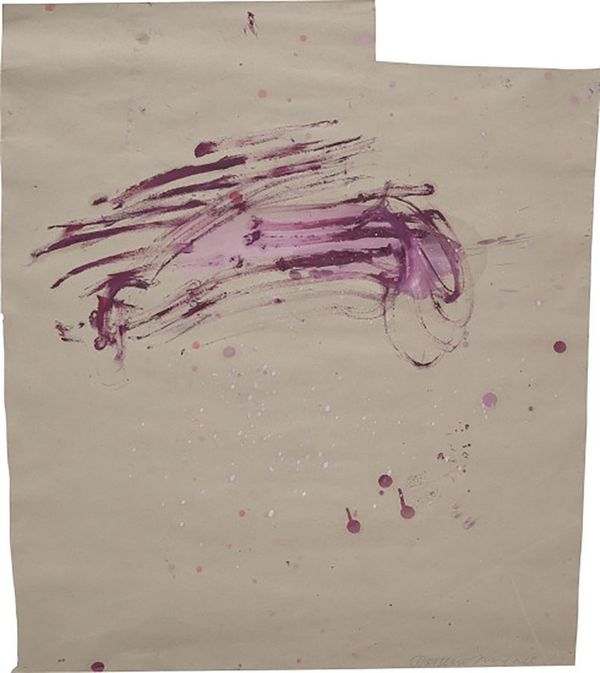
Martha Jungwirth, Untitled, New Now, London.
Martha Jungwirth
Winner of the 2021 Grand Austrian State Prize, Martha Jungwirth has in recent years come to be seen as something of an international sensation and Austrian national treasure. Despite gaining recognition in the 1960s and 70s as cofounder of the Viennese Wirklichkeiten (Realities) collective that culminated in her participation in documenta 6 in 1977, the artist subsequently worked in relative obscurity for decades. Then, in 2010, she was included in an important group show at the Essl Museum, notably curated by Albert Oehlen. From that moment, her career has skyrocketed, with important exhibitions of her work at the Kunsthalle Krems in 2014, the Albertina in Vienna in 2018, and galleries throughout Europe, in addition to being awarded a prestigious commission for the Vienna State Opera.
Jungwirth’s work is prized for its gorgeously unpretentious honesty and grace. In addition to large-scale abstract paintings of sweeping lyrical grandeur, she is celebrated for her smaller, more intimate and deftly real works on paper — cardboard, brown or lined — or the backs of paintings, old maps, and account books, onto which she fingerpaints, scratches, scrawls, and spatters in a fluid and open-ended diaristic process. Our offering in the sale is an oil on paper that epitomizes the artist’s understated, poetic eloquence.
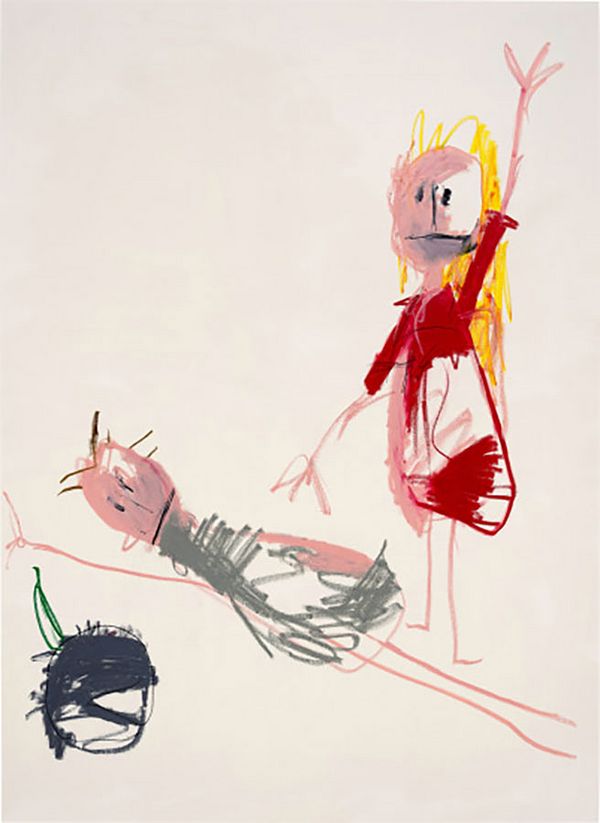
Andi Fischer, Ritter wo am Boden liegt, 2018. New Now, London.
Andi Fischer
Born in Nuremberg in 1987, Fischer currently lives and works in Berlin, where a recent flurry of exhibitions have earned the artist a well-received reputation on the German scene. His canvases are deceptively simple, faux-naif simulations of children’s stick-figure drawings that coyly deconstruct the grand tradition of historical masters like Dürer and Rubens. The works resonate on the one hand with the simple directness of a child telling a story and, on another, as beautiful lyrical abstractions of playful calligraphic marks. They unfold slowly in passages that are more methodical than emotive, inviting the viewer to decipher their psychological complexity over time.
Ritter wo am Boden liegt (Knight Fallen on the Ground), a large oil pastel on canvas from 2018, is a triumphant example of the artist’s signature style. A beautiful composition of bold strokes in red and black set against soft fleshy pink, yellow, and grey, it presents the warrior’s fallen posture, the “innocent” maiden’s raised arm, and a black apple lurking unobtrusively in the foreground to open a complex and provocative narrative with no easy reading.
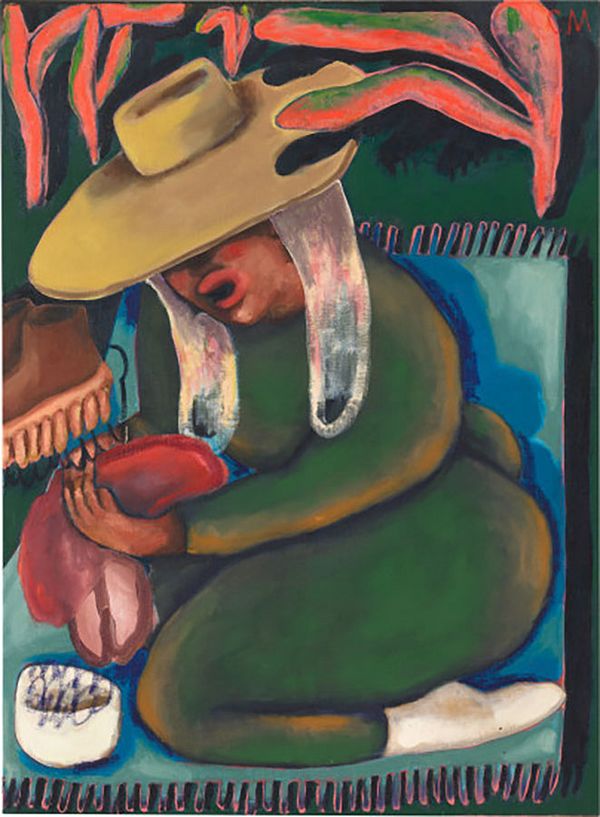
Conny Maier, Genießbar 6, 2019. New Now, London.
Conny Maier
Celebrated for large-scale compositions painted with Neo-Expressionist comedic bravado and bold swathes of brilliant color, Conny Maier pokes holes in idyllic fantasies of harmony with nature. All her work employs beautiful fun with sly irony to probe the sociopolitical issues, social classes, and body politics underpinning human behavior. Humans and our uneasy relationship with nature is among her most recurrent and popular themes.
The artist divides her time between her hometown Berlin and the Portuguese surfing village of Baleal. A trained fashion designer, who even created her own label, Maier found her true calling as a painter, quickly emerging as a new star on the scene and exhibiting widely in venues around the world, including König Galerie in Berlin in 2020, the same year she won the prestigious Deutsche Bank Artist of the Year award. Genießbar 6, executed in 2019 in oil and oil pen on linen, is a radiant example of her signature style and features a figure seated on the ground with an open mouth — her trademark gesture of existential bewilderment.
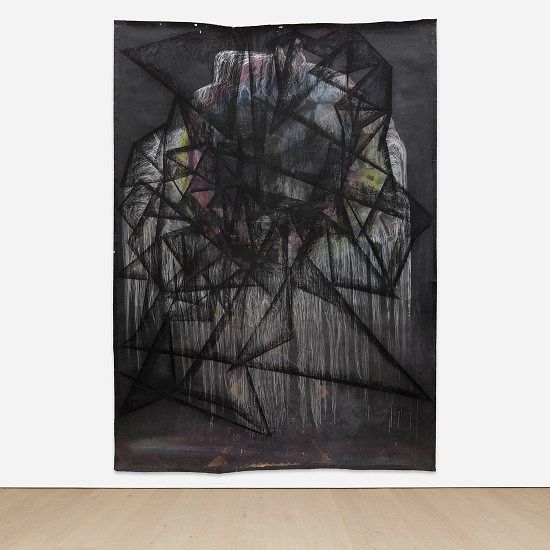
Kerstin Brätsch, Untitled (from psychics series), 2007. New Now, London.
Kerstin Brätsch
In porous, open-ended explorations, multimedia artist Kerstin Brätsch pushes the boundaries of conventional abstract painting to encompass a dynamic array of strategies and techniques, with an emphasis on collaboration (notably Das Institut, with Adele Röder — and sometimes others) and the chance effects of technique. Diverse media, often employed in unconventionally hung works on paper and mylar, range from spray paint to stained glass, digital imagery, and pre-Modern decorative techniques. On offer are two multimedia works from an early, formative moment in the artist’s mature oeuvre that anticipate and distill the artist’s core mystical themes and strategies.
In addition to being featured in this year’s Venice Biennale and opening a solo — as the winner of the Peill Prize — at the Leopold Hoesch Museum in Düren, Germany this September, the artist has been featured in some of the most important group shows of our times, including MoMA’s controversial painting survey The Forever Now (2014) and the New Museum’s Younger Than Jesus (2009). Brätsch, born in Hamburg in 1979, is a graduate of the Columbia MFA program, and has been based in New York since 2005. She’s worked with Gavin Brown’s Enterprise and Gladstone in NY and Serpentine Galleries in London. She has pieces in a number of important collections, including MoMA, for whom she completed an important commission of 29 works in 2019.
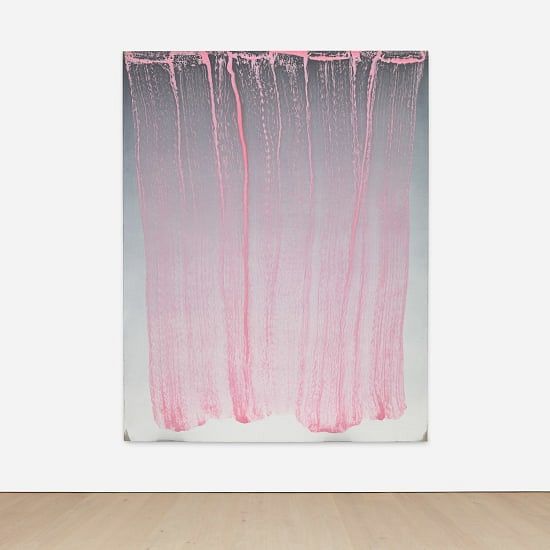
Robert Janitz, Deep Beneath the Surface, 2017. New Now, London.
Robert Janitz
Wielding his unique, curiously mundane trademark medium of oil, wax, and flour against monochrome backgrounds, Robert Janitz creates emphatically real, poignantly contemplative compositions of richly plainspoken elegance. He elevates the brushstroke to the status of an icon of resolute equanimity and workmanship — in open contradistinction to his more Baroque forebears of the 1980s, like David Reed.
The artist, born in Alsfeld, Germany in 1962, is globally celebrated as one of contemporary Minimalism’s most savvy and witty painters, championed by a peerless cadre of galleries, including Canada Gallery, König Galerie, and Team. The monumental work on offer from 2017, entitled Deep Beneath the Surface, features strident vertical pink strokes floating on a graduated field of grey. It is a work of supreme grace — among the artist’s simplest and most holistically resolved full-body, performative executions.
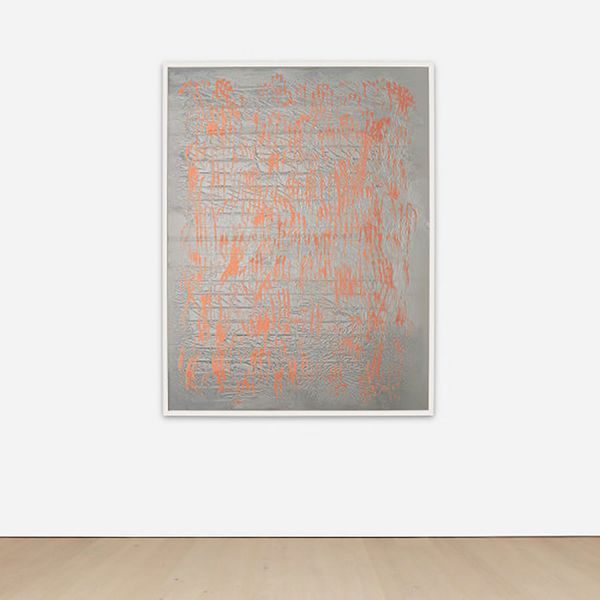
Pamela Rosenkranz, Express Nothing, 2012. New Now, London.
Pamela Rosenkranz
The Zurich-based artist, born in 1979, has achieved much attention for her rigorous conceptual practice (informed in part by of the Speculative Realism movement), which comes to life in beautiful installations, sculptures, and works on paper harnessing immaterial elements like sound, color, and smell — even hormones and bacteria — to critique our species’ biologically-determined subjectivity, which is commonly exploited by marketers to create products.
Rosenkranz’s installation at the Swiss Pavilion — a highlight of the 2015 Venice Biennale — featured a vast pool filled with a fleshy pink monochrome liquid matching the standardized northern European skin tone — a color she pointedly employs in much of her work. She’s in high gear now, exhibiting widely and already getting attention for the much-anticipated unveiling next spring of her sculpture commission for New York City’s High Line — a 25- foot-tall, fluorescent pink tree. Of interest to collectors are her pink body prints on silver emergency blankets. Reminiscent of Yves Klein’s Anthropometries, they more emphatically highlight the human body’s figural, corporeal, and spiritual absence — an important and recurrent theme in the artist’s oeuvre that is reinforced in our large work on offer by its title, Express Nothing.
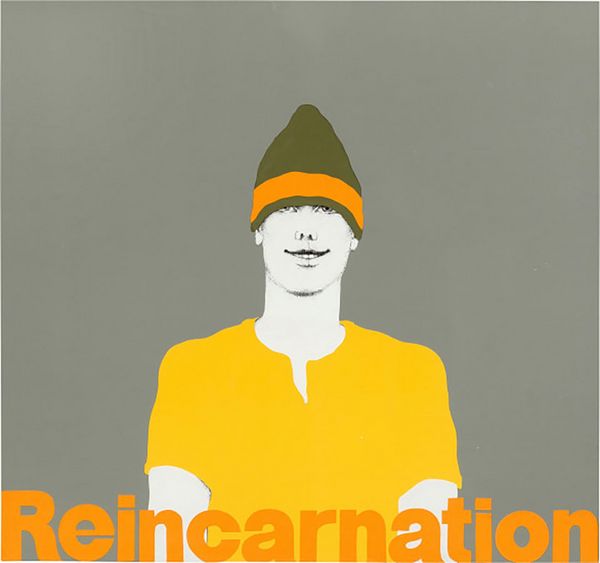
Kai Althof, Reincarnation, 1990. New Now, London.
Kai Althof
A multi-media collage artist, painter, and musician born in 1966 in Cologne, Althof is a consummate draftsman and among the most complicated artists of his generation, famous for his spinning labyrinthine narratives through imaginary environments populated with dense amalgams of finely detailed drawings, collage, textiles, soft sculpture, paintings, writing, video, fragrance, and song. Subjects include pop culture, history, religious iconography, and counter-cultural movements. Stylistic references run from medieval to Expressionist.
Althof made a splash in New York with his sprawling 2016/17 installation at MoMA. A dynamic and densely interwoven presentation of sculptures and meticulously crafted images, it was a world unto itself. He’s also a 2012 Whitney Biennial artist, who has vouchsafed his reputation as a protean creative whirlwind in a series of important solo exhibitions at Michael Werner, London in 2014, TRAMPS, New York in 2018, and Whitechapel, London in 2020. Offered in our auction is Reincarnation, a superbly attractive mid-sized paper-on-paper collage from 1990. This early work has a transcendent, youthful utopian vibe that hints at the best of things to come.
Discover More from New Now, London >
Recommended Reading
New Wave: Painting in Britain Today >
The Prompt: A Short Fiction Series for Authors Inspired by Artists >
